| |
When it works
10/28/2022. Tracking collimation, everything seems to have come together very nicely. The multi-star guiding in PHD2 is superb. That and the reasonably well-aligned A-P mount are giving me guiding in the 0.4 arc second range.
Among the subjects persued during this spell of good weather: a more complete LBN 332, a much-improved M33, stars in M31, the soap bubble, the Bubble Nebula, and a small planetary nebula hiding out in the starfields of Cygnus.
I used Starizona's Ideal Exposure Calculator and several recent efforts to decide (1) I've been exposing too long in L, R, and B, and (2) not long enough in H-a. O-iii is its own damn problem, and that will be worked out soon. I adopted 60s at unity gain for broadband imaging and 600s at unity gain for H-a. Those new norms replace 180s at unity for broadband and 180s and 300s at high gain for narrowband. For H-a, 900s might be even better. I was concerned that differential flexure between the guide camera and the imaging camera might be a problem on the long side of 300s, but 600s seems fine. A block of substanial foam provides some extra support under the guide camera; it does no harm and it seems like a good idea. Note that the 600s dark is not behaving (it acts as if there was a light leak during acquisition, which seems unlikely, but there you go). In the meantime, the ASI1600MM is so electronically quiet that a 180s dark takes care of most of the need. Still, that needs to be solved.
Exposure details are provided below each preview. All data comes from an ASI1600MM camera behind the 10-inch R-C at an EFL of 1200mm (F4.8). As usual, I'm pushing most of the data just that little bit too far, especially on the left edge of the histogram.
Click any image to revel in bigness:
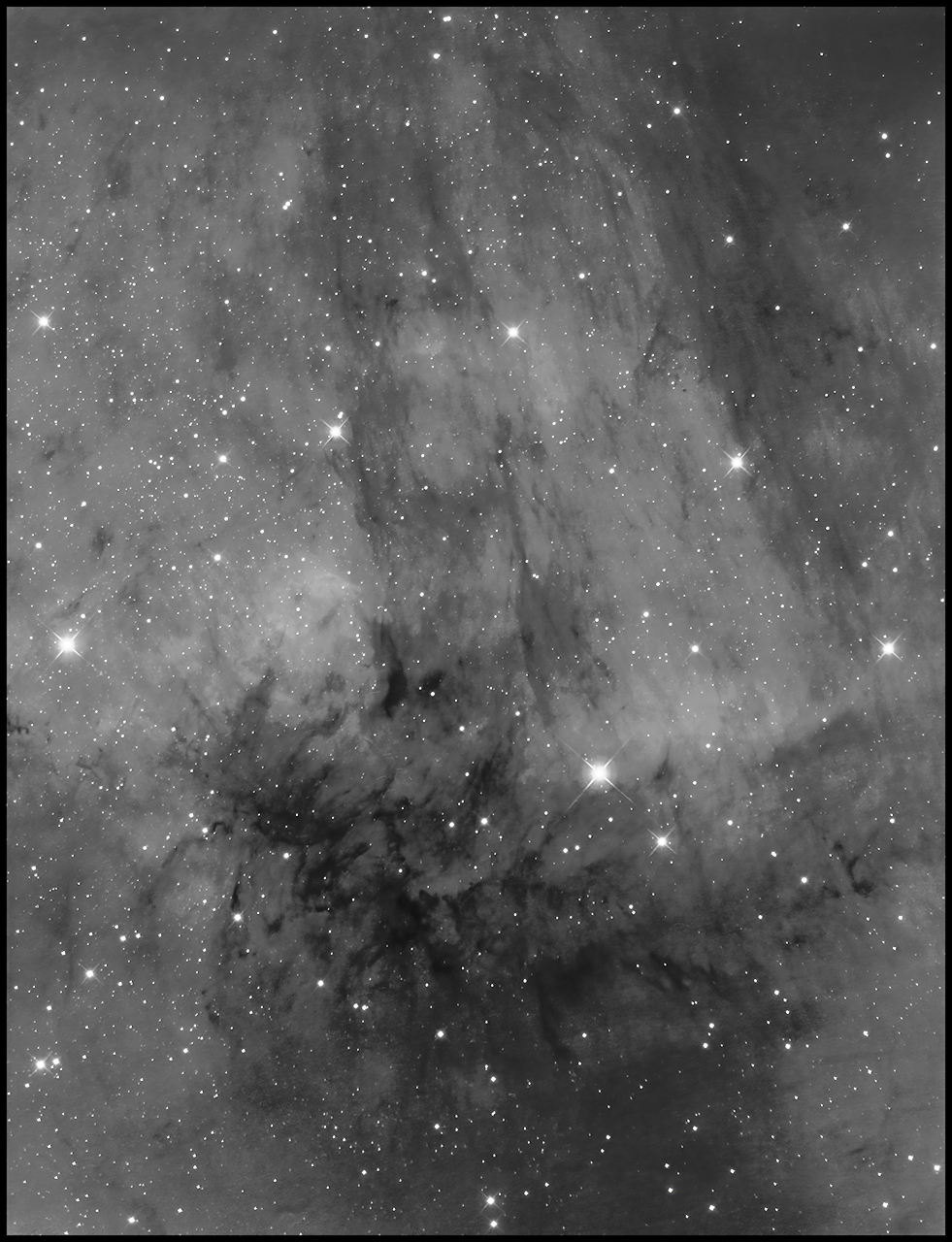 LBN332 LBN332
47x180s + 157x300s H-a (15h 26m)
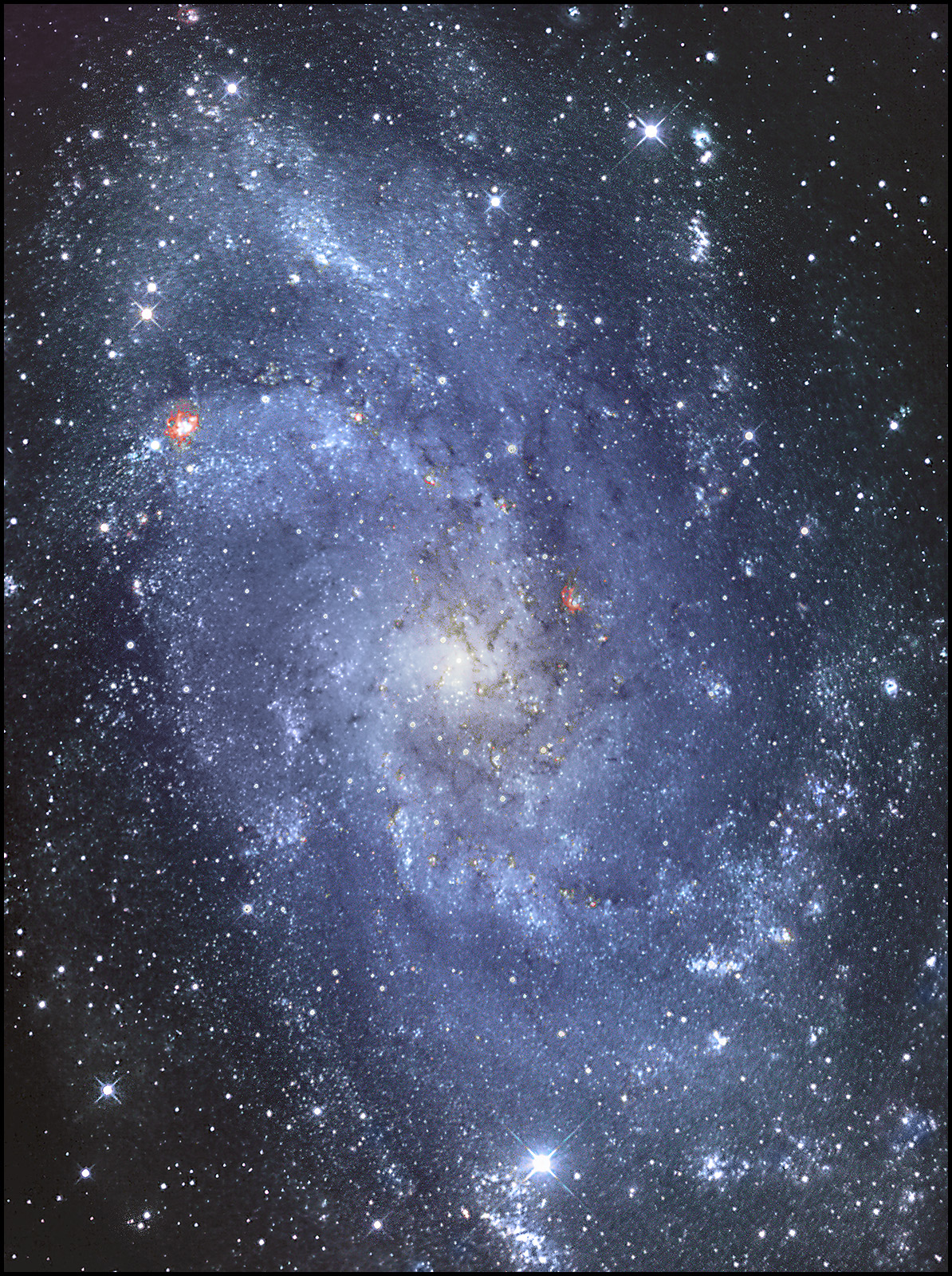
M33
166x180s L, 10x180s R, 10x180s B, synthetic G (9hr 18m)
starless blend and self-masked
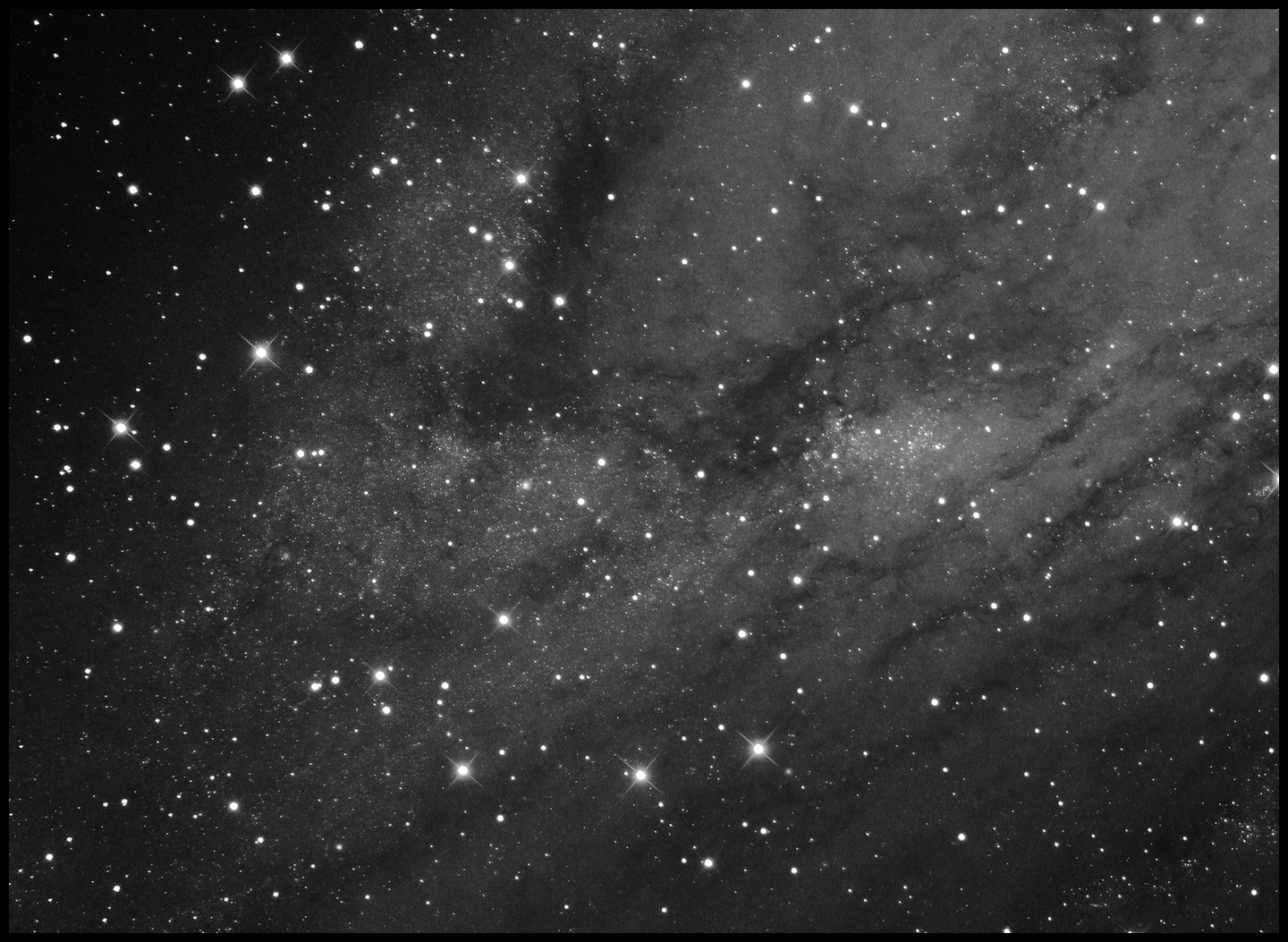 NGC 206, stars in M31 NGC 206, stars in M31
183x180s
L (9hr 12m)
cropped
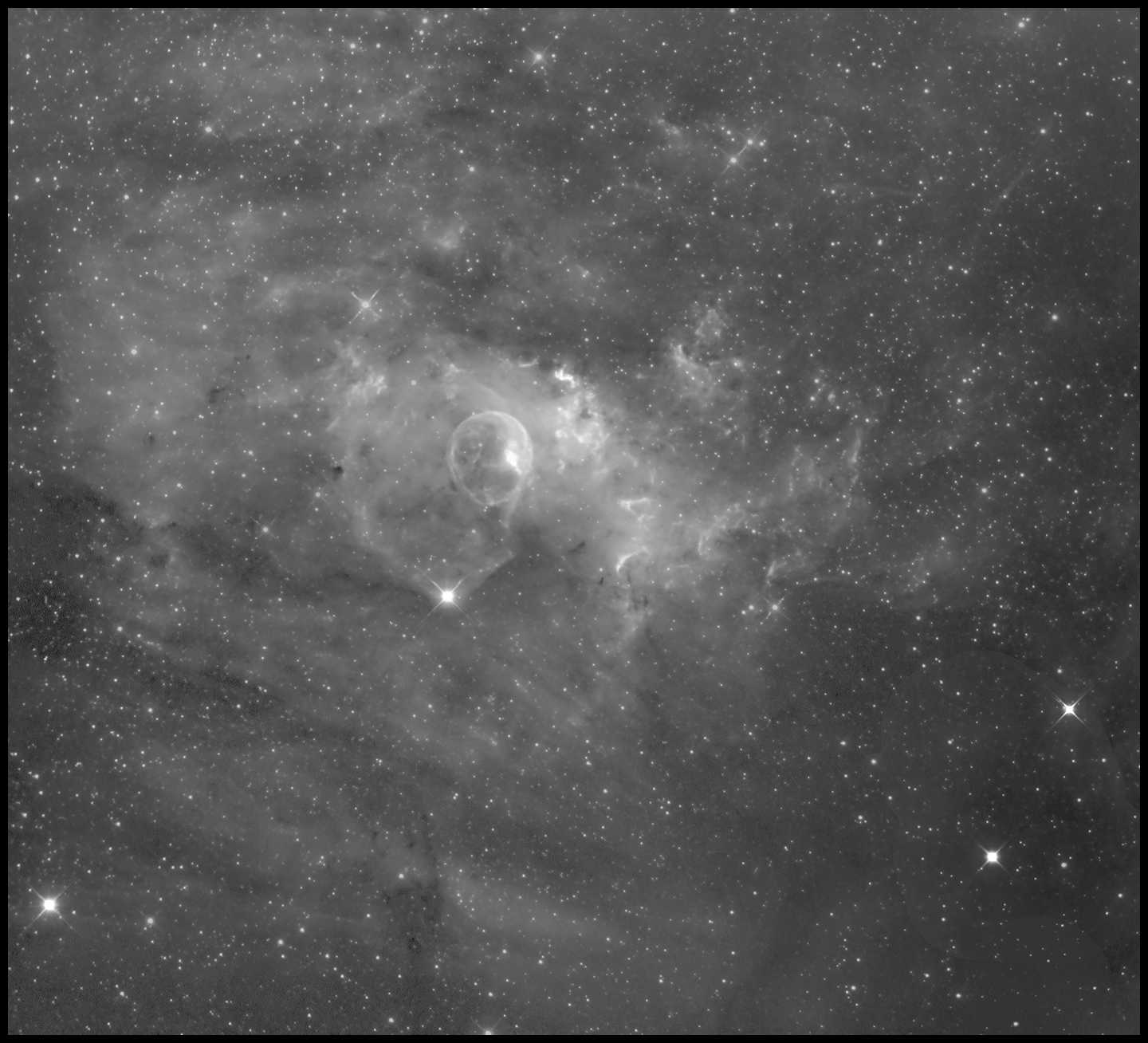
NGC 7635
137x300s H-a (11hr 15m)
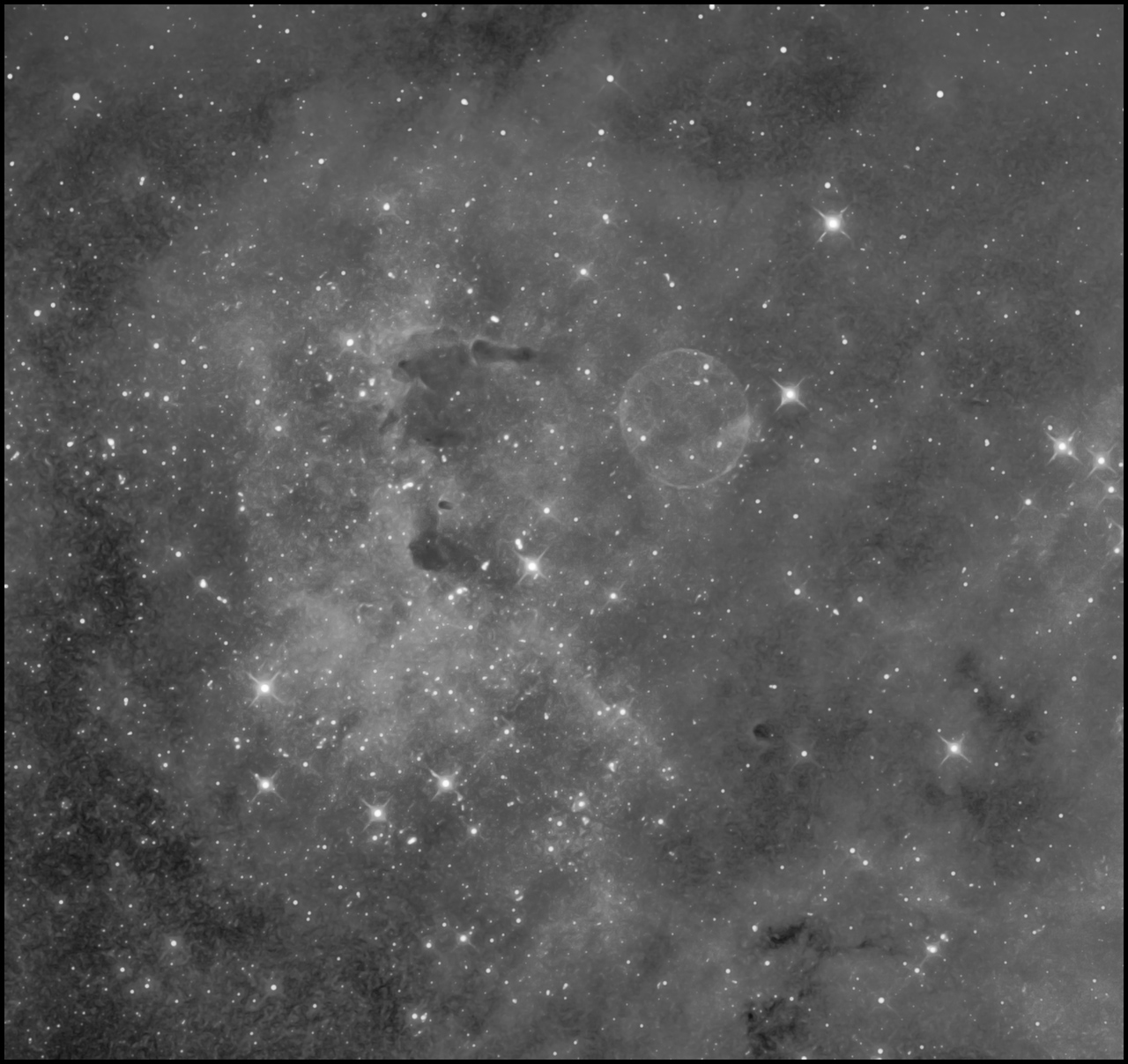
The Soap Bubble near the Crescent Nebula in Cygnus
66x300s + 60x180s (9hr 30m)
cropped
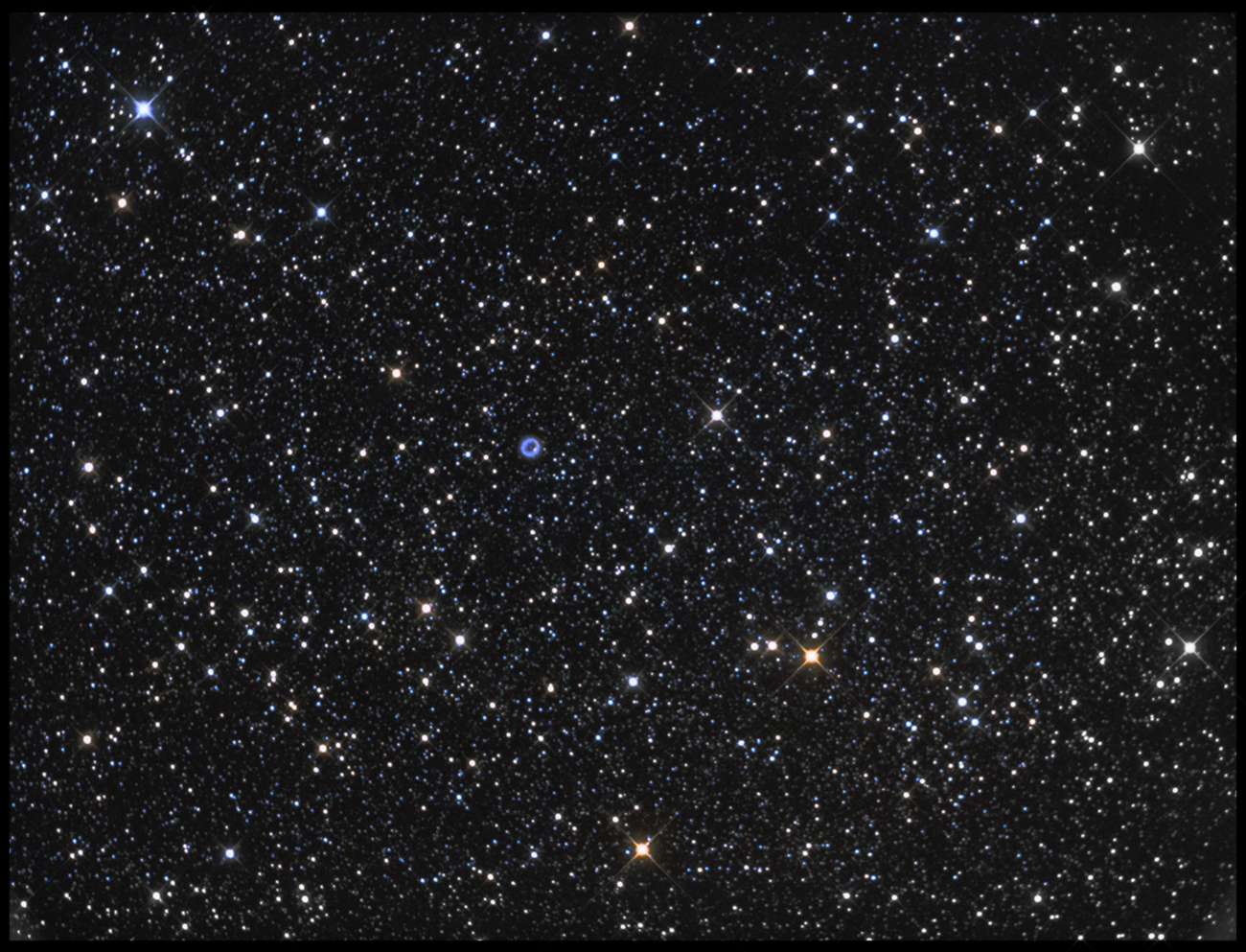
NGC 6894
20x60s R, 20x60s B, 60x60s L (1hr 40m)
In some of these, I've used the Starnet process in Pixinsight to remove stars, leaned on the nebulae, and then put the stars back. I need to practice and refine how I think of that step. It can produce some nasty dark ringing and some nonsensical histograms.
Also, the "shadows and highlights" adjustment in Photoshop is a new-to-me tool which worked well on, for example, the soap bubble image. Practice, Mister. Practice.
The distance modulus of M33 is 24.9. A star as bright as the Sun would be 24.9 + 4.8 ~ 30th magnitude that far away. The faintest stars in this photo are between 19th and 20th magnitude. Stars in M33 more than 10,000x brighter than the Sun are visible, and those 50 - 100,000x brighter than the Sun shine clearly. For a challenging BOTE, calculate how many stars in M33 are at least as bright as that.
The DM to M31 and its embedded starcloud NGC 206 is 24.4, and that photo above goes to about 20th magnitude. It includes several globular clusters. A few can be identified from their appearance, and many more can be picked out by reference to a specialized dataset in Guide software, especially at the original full-resolution of the photo. Some recent work, including the NGC 206 and M33 photos on this page, revisit compositions of photos from the 1930s made with the 100-inch Hooker telescope on Mount Wilson. For example, see plate XXXVII in The Stars in Their Courses by Sir James Jeans. That instrument collects about 100x as much light as mine, a difference that has pretty much been made up by a century of technological progress. I really can't quite imagine what it took to get that deep a photo on glass plates.
:: top ::
My deep-sky photos are made with a variety of sensors and optics. Deepest images come now from a ZWO ASI1600MM Cooled Pro CMOS camera, an ASIair (model 1) and sometimes one of several laptops. A good many images come from an unmodded Canon 6D but a lot more will be coming from an R6. Video and video extracts begin in a Canon EOS M, usually running in crop mode via Magic Lantern firmware (but the 6D and especially the R6 will probably see more use). Telescopes include an AT10RC, an Orion 10" F4 Newtonian, and a pair of apochromats: a TMB92SS and a AT65EDQ. A very early Astro-Physics 5" F6 gets some use, too. So do lots of camera lenses on both the ASI1600 and on the Canons. A solar Frankenscope made using a 90mm F10 Orion achromat and the etalon, relay optics, and focuser from a Lunt 60 feeding a small ZWO camera will see more action as the Sun comes back to life (Autostakkart!3 is my current fav for image stacking). Mounts include an iOpton SkyTracker (original model), a bargain LXD-55, a Losmandy G11 (492 Digital Drive), and an Astro-Physics Mach1. PixInsight does most of the heavy lifting; Photoshop polishes. Some of the toys are more or less permanently based in New Mexico. I desperately hope to get back soon.
|